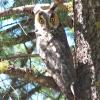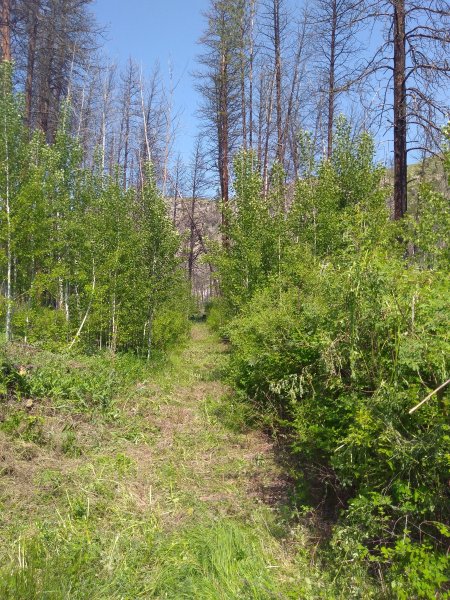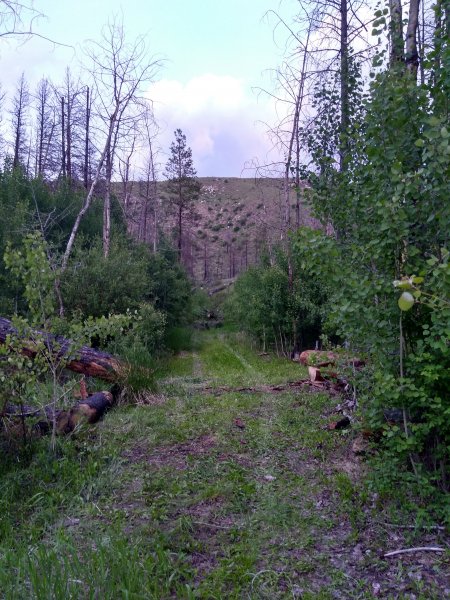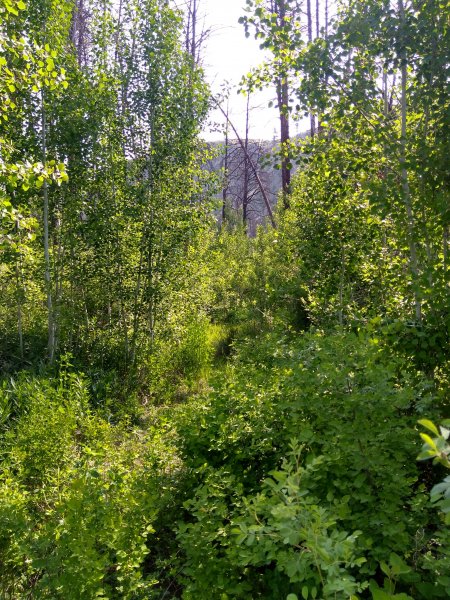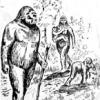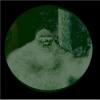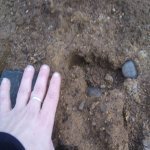Leaderboard
Popular Content
Showing content with the highest reputation on 06/27/2019 in all areas
-
BTW - I've been pondering it a bit. I bet that was a phone insulator. Before the Pacific Crest Trail was designated in '72 we had the Oregon Skyline Trail. It was originally from Mt Hood to Crater Lake. That section was finished in 1920. The rest, connecting to the OR/WA border and OR/CA border, was finished in the 1930s if I remember right. The PCT and OST use 70-80 % of the same route, but not all of it. The O-S-T route was changed a few times over the decades. There was a time when, at least for some locations, a phone line followed the O-S-T connecting fire lookouts back to town ... all pre-dating wilderness designation of course. I've seen those insulators a place or two on the PCT where it uses the same location as the older O-S-T. I betcha that insulator is along an abandoned stretch of the O-S-T. Bet if I had taken more time to look around left and right rather than plowing straight ahead (east) I might have seen more insulators, maybe old blazes on trees. I have been trying to locate the old O-S-T in that area and map it before it is lost. I think that insulator is the loose thread I have not previously been able to find. A sense of excitement / accomplishment is building. The very cool thing is I GPS-ed it. Cramps .. I usually get them in the hamstrings first, then in the sartorius muscle from controlling my leg as I loft them over obstacles. Finally in the quads, usually lower end. Though it is my calves where I get them when I'm sleeping, those seem pretty bullet proof when I'm out hiking. MIB3 points
-
I apologize for my tardy response Hiflier. I have been thinking about how I might answer your questions (and whether or not I could). 1st a disclaimer: I was educated as a paleobiologist. I have studied fossil invertebrate populations with regard to their specific variations (variations within a species due to ontogeny - that is growth from infant to adolescent to adult), parasitism by competing organisms, and evolutionary considerations as they impact our understanding of the genus, family, and order classifications in a particular class of invertebrates. I have taken graduate level courses in genetics and evolution (but a long time ago - invertebrate zoology was one of my two minor subjects), BUT I AM NOT A GENETICIST! So take what I might say with some healthy skepticism - and I welcome discussion from real geneticists (and I am guessing from your questions that you already know most, if not all, of what I am going to say). Some good news: With regard to DNA, hair is amazingly stable in a variety of environments that would be considered risky in other respects. That is mainly due to the presence of cuticle, the outermost hard layer of a three-layered hair shaft (inner medulla, medial cortex, outer cuticle). The cuticle protects the medulla, and the medulla contains a lot of mitochondrial DNA (mtDNA). Some bad news: Nuclear DNA (nDNA or nuDNA) is lost in the process of cornification - in which protein cells become hair. Although many people think that a follicle needs to be attached to a hair shaft for extraction of nDNA, nDNA has occasionally been extracted from the medulla of a hair shaft - sometimes months or even years after the hair has been pulled/shed from a human body - I guess this should be included under the "good news". In most cases the best that one can expect from hair in terms of DNA is mtDNA. mtDNA is not pertinent for ID'ing individuals, but works for ID'ing species (if that species' genome is included in an existing gene bank - and it should be useful as a match for higher classifications as well, such as genus, subfamily, and family). According to at least two hair experts, Sasquatch hair commonly lacks a medulla, and, when present, the Sasquatch medulla is discontinuous and not prominent. A number of mtDNA studies of purported Sasquatch hair have suggested Homo sapiens, and the natural conclusion is human contamination. There are a variety of methods for decontaminating DNA samples, and actually hair, again because of the protective cuticle, is especially prone to successful decontamination. As I have said in other threads, there exist in all know human DNA (ALL HUMAN DNA) genetic markers that are unique to Homo sapiens, so any DNA researcher looking to verify human contamination or to suggest the existence of other than human DNA, must look for one, or a few, of those markers, else he/she is falling short of performing adequate study (trying to be kind here to past researchers - I would rather say #*&@&%$*!). I think study of suspected Sasquatch hair is worth study, without regard to external environmental challenges and without regard to time in environment. I am not like the body of posters on this site (mainly inductive reasoners - some brilliant, some notsomuch) that can run through a myriad of explanations and possibilities addressing a single data point. I am admittedly not brilliant - I am a plodder. I try to gather a lot of data and methodically work through that data to try to understand it (that's a tough thing in this Sasquatch world containing a fair bit of purely anecdotal data). If I were confronted with testing old hair for DNA or making the determination no to do so because conclusive results might be unlikely, I would say do the analysis - one never knows what might turn up (my experience has been the more one learns, the more one realizes there is more to learn). I had planned to address your questions more directly, but I am running out of gas. The subject does interest me, however, and I look forward to more communication with you.2 points
-
1 point
-
https://www.antiquetelephonehistory.com/telworks.php I think they ran a bundle of wires depending on the need from town to town. And individual wires to whomever had a phone. My mom has a old phone in her house. I believe you picked up the ear piece and rang the operator with the crank. She would pick up and ask you who you were trying to get ahold of. If it was a family in your town she would patch you into their line. If it was New York she would patch you into that operator and so forth. But as young as Iam I was raised on a party line. With about 7 families on one line. When my dad was expecting an important phone call and the neighbor girls were yakety yakking on the phone for too long. Dad would get abusive with that old rotary phone, beating the handset on the pedestal.1 point
-
1 point
-
1 point
-
It was a fun walk. Pretty good workout. Lifting my forward foot, then my trailing foot, clear of the logs about a bazillion times is much harder than covering the same distance on flat ground. It's those extra lifting muscles that were screaming and occasionally cramping. Since my blood tests come back mid-range on electrolytes, I don't think that was the issue, just lactic acid building up faster than I could process it. I have the calf cramps at night, too. Each time I have one I find the toes pointed down and the heel drawn up. I don't know if that is cause or effect. If I catch them quick usually the damage is minimal. I had one a while back that left visible bruising on the calf for several days. I was fairly gimpy for a day or two also. It's not in the same locations that cramp from over-use. The only thing I've found at all effective is to remember to stretch by pulling the toes up to the body rather than pulling them down away from the body. Hard to remember in a state of half-sleep. Anyway, there is an old trail out there. That's part of what I'm looking for. The area was designated wilderness in 1984. That trail was last maintained some time before that. I'm not sure what its purpose was. The whole area used to be grazed in summer ... maybe it was for getting to or from where cattle were. It could also have been an older version of the trail that runs N-S through the area. From old maps it seems to have been rerouted a few times. I am also looking for the main alternate to the current route. I may have found it .. out in the woods with no other reason I can think of for being there I found a fallen tree with a rusty wire and one of the old white insulators. If so, that's a piece of a puzzle I've been pursuing for about 4 yars found. Gotta go back once I have more time. Fingers crossed. MIB1 point
-
Thanks for that tip. I'll look for Strufert's article. I would think that with John Green all over that NW California region during the sasquatch years 1958-1970, and if Laverty had a sighting and nest find, Green would have documented it........unless Laverty was careful not to allow such documentation because of his career. Also, Laverty expressed skepticism over the PG event, which is remarkable. Like others, he noted that the film site was observable from the logging road, on a Friday afternoon, and during deer season, and also that he and others were in there daily, yet a couple of Washington cowboys came in and caught the footage. Neither of those facts downgrade the plausibility of the footage to me. Indeed, if one was to film a hoax, that time/place would be a horrible choice, either because a witness could catch you (ruining the hoax) or Bob Heironimous could catch 180 grains of lead through his very special monkey suit.1 point
-
I'd say that they use the cover of darkness to travel undetected. They might retreat to high ground where we humans spend less time. They seem to be designed better for that type of terrain.1 point
-
This is the guy who posted up the famous "fish eye" picture of the BF taking his own picture as I remember. The picture was traced to a google graphic of a fishes eye IIRC. Most of the crowd got off that sinking ship then that had any semblance of accountability not to reinforce these wankers. I must say BF voices cracking the ice was great too though. The rest of this documentation is just icing on the cake.1 point
-
Maybe that’s how they get those eyes glowin. Green could mean fully charged all the way down to that Dang Red Low Battery Eyeball Power Again?! Gotta hit up one of them electrical doodads again... 🙈1 point
-
That may very well be. Regardless, his relative silence was probably good for his career. Lyle Laverty was one of two Forest Service veterans known to be on the Trump Transition team’s list of candidates to be Chief of the Forest Service. We're talking Cabinet level authority. He served in both the U.S. Forest Service and the U.S. Department of the Interior. At Interior, he was the Bush Administration’s Assistant Secretary for Fish, Wildlife and Parks, and within the Forest Service, he held several high-profile positions including Deputy Assistant Chief. Vocal sasquatch "bleevers" simply don't rise to such lofty positions. That is an excellent question. I don't have an answer. Again, everything regarding Laverty in the area during that era is extremely mysterious. Consider: http://www.bigfootencounters.com/articles/laverty.htm Lonesome Ridge is directly above the PG film site on Bluff Creek. And why are his sighting and nest find not recorded anywhere? How did Bobby Short know of any of this? I have some suspicions. I think Laverty was as intrigued with the phenomenon as everybody else in the area. He graduated from Humboldt State University in 1965, and was working as a timber cruiser crew leader afterwards, so was in the region during most of the entire 1958-1967 sasquatch events of the Klamath/Salmon/Trinity regions. I think he was as intrigued as everybody else, especially if he had his own sighting, nest find, and perhaps footprint finds that we may not know about. And I think his silence was because the Forest Service simply discouraged any activity with regard to the phenomenon, if not overtly, then by dismissive behavior towards it. I think he knew where Patterson and Gimlin were camped, and knew that Bluff Creek as well or better than anybody. When the news of the film hit Orleans and the words "Bluff Creek" were uttered, he pretty much knew where. Who knows, his nest find above the film site might have been made just before the filming. More: http://www.bigfootencounters.com/articles/laverty2.htm1 point
-
Now that I have nothing to do on the weekends, since my truck is broken down, I've been rewatching some of my favorite videos. This is one of my favorites. It's the one I show folks who question if bigfoots might actually exist and why they behave as they do.1 point
This leaderboard is set to New York/GMT-05:00



